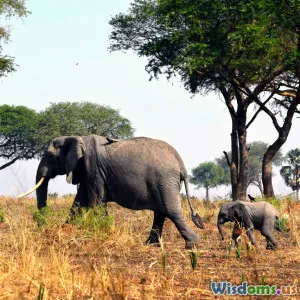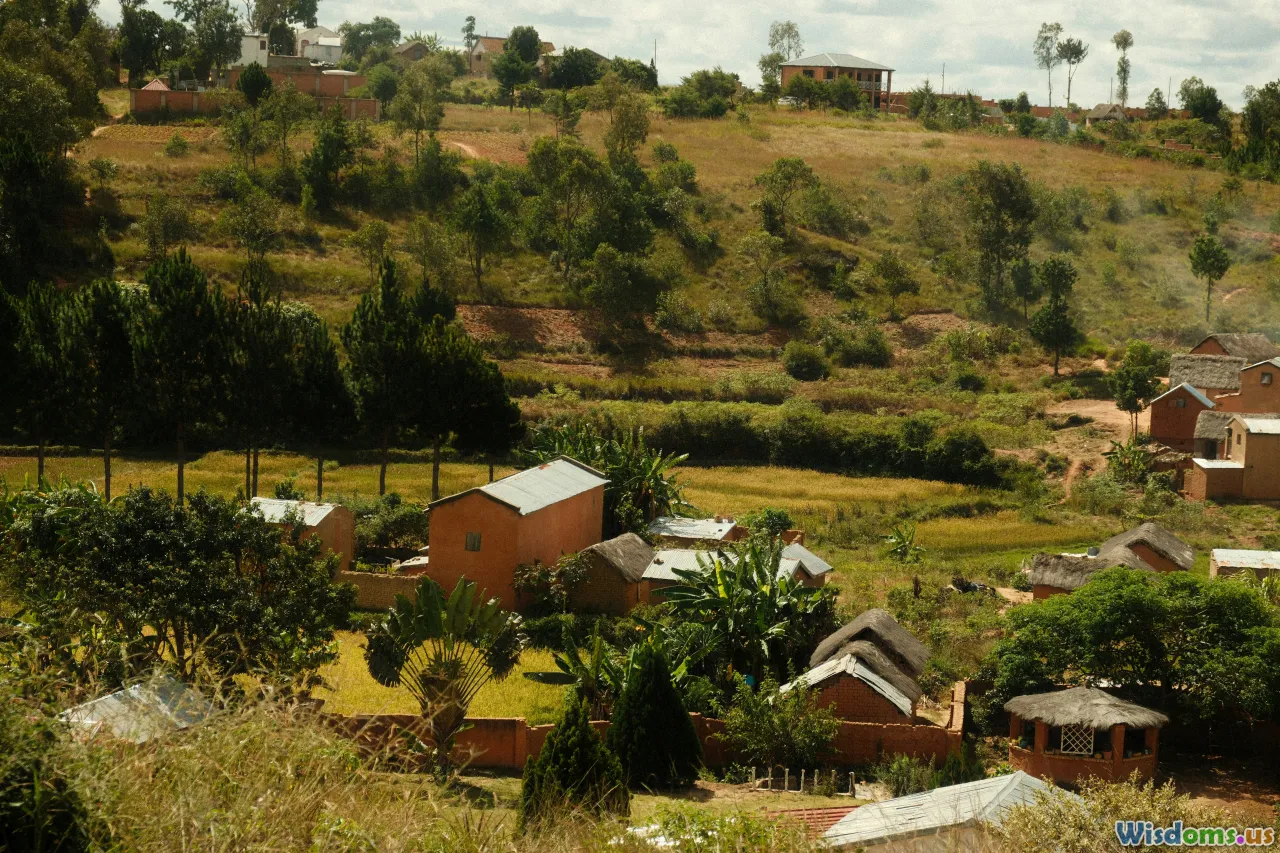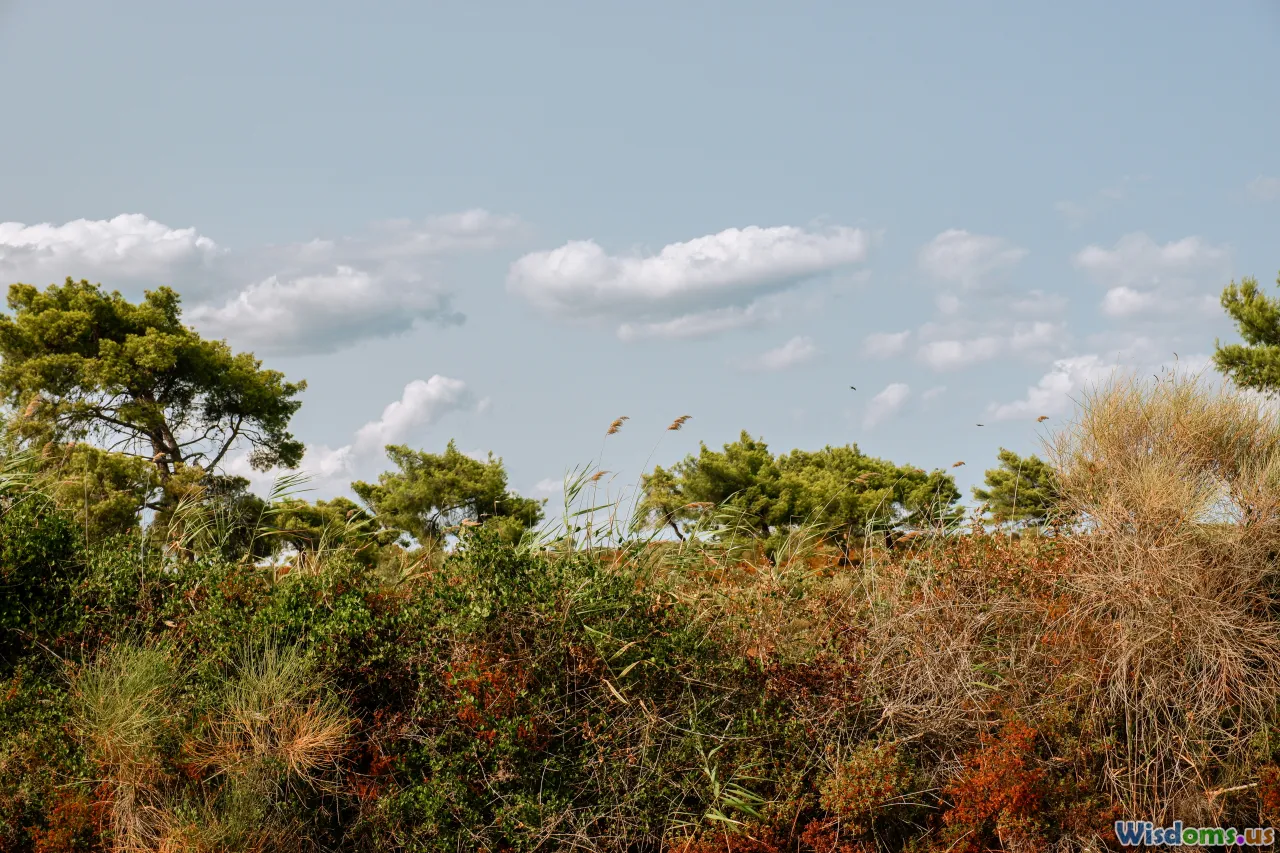
Why Some Wildlife Protection Laws Harm Rather Than Help
16 min read Explore how some wildlife protection laws unintentionally harm endangered species and local ecosystems, offering real-world examples and alternatives for better conservation outcomes. (0 Reviews)
Why Some Wildlife Protection Laws Harm Rather Than Help
Around the world, wildlife protection laws have become fundamental tools in the fight to preserve our planet’s astonishing biological diversity. From sweeping acts that ban the hunting of endangered species to comprehensive ecosystem protections, lawmakers aim to slow—or even reverse—the direct impacts of human activity on vulnerable populations. Stories of species snatched from the brink of extinction by legal protections foster hope and inspire continued activism.
Yet, the full story is more complex. Not all well-meant laws accomplish what they set out to do—and in some cases, wildlife protection statutes inadvertently exacerbate the threats they seek to mitigate. Understanding why this happens holds lessons for conservationists, policymakers, and engaged citizens alike. Let’s explore the paradoxes and pitfalls that make certain wildlife laws problematic, delve into notable examples, and discover how smarter strategies can save nature without unintended harm.
The Perils of One-Size-Fits-All Regulations

A key challenge with most wildlife protection laws is their tendency toward universal application. Legislators striving for broad reach often draft policies that apply equally across diverse landscapes, habitats, and cultures. Yet ecosystems are nuanced, and blanket rules can overlook local realities.
Example: Blanket Hunting Bans in Africa
Perhaps the most well-known example arises from international campaigns to outlaw trophy hunting in African nations. While dramatic headlines about endangered lions and elephants shot for sport compel a moral outrage, they gloss over complex on-ground dynamics. Communities in places like Namibia, Zimbabwe, and Botswana historically manage sustainable hunting programs that generate much-needed revenue for local development and engage villages directly in poaching prevention.
When foreign-backed bans or restrictions are imposed, these communities lose income and incentive to protect wildlife. Paradoxically, animal populations can decline as conservation programs falter, and poaching increases due to deteriorating enforcement capacity. The wildlife becomes a liability rather than an asset, undermining long-term conservation success.
Lesson Learned
Effective policy requires tailoring regulations to ecological, social, and economic realities of specific regions, a process often overlooked in the quest for global consistency.
Backfires from Strict Endangered Species Protections

Strengthening legal protections for endangered animals seems logical at first glance. However, unintended consequences sometimes emerge, creating what researchers call the “shoot, shovel, and shut up” problem.
Livelihood Risks and Landowner Reactions
Consider the U.S. Endangered Species Act (ESA). When certain animals are classified as endangered or threatened, landowners face restrictions—on grazing, building, harvesting timber, or altering land—that can deeply affect their livelihoods. As a result, some landowners preemptively destroy habitat or quietly remove at-risk species from their land, fearing regulatory burdens if wildlife is detected and reported.
A Real-world Case: The Red-cockaded Woodpecker
In the southeastern United States, discovery of the endangered red-cockaded woodpecker on private pine forests can trigger land-use restrictions. Studies showed that some landowners were inclined to cut trees earlier or modify habitats to prevent the woodpeckers’ presence, rather than enhancing them. The perverse result? Habitat loss accelerated for the very species the law aimed to protect.
Towards Collaborative Solutions
Policies that support rather than penalize landowners, such as habitat conservation incentives and partnerships, have proven more successful in promoting recovery. Reframing wildlife as an asset rather than a liability reshapes landowner attitudes and behaviors.
Undermining Traditional Conservation Practices

Wildlife laws drafted from a distant parliament often conflict with the long-standing stewardship techniques practiced by Indigenous and local communities. Excluding these stakeholders from the lawmaking process can backfire.
Case Study: Conservation and Indigenous Rights
In India's forested regions or the Australian outback, many traditional societies have managed ecosystems for generations, using seasonal hunting, sacred groves, and local restrictions to sustain both wildlife and human nourishment. When wildlife protection laws ignore these customs—limiting harvest rights or evicting people from ancestral lands—they erode cultural knowledge and the incentive to protect habitats.
The Maasai of East Africa
For example, Maasai pastoralists have coexisted with migratory wildlife on the East African savannah for centuries. Strictly enforced national park boundaries, often supported by international donors, curtailed Maasai movements and grazing rights. Some previously protected areas saw illegal incursions and even more severe resource use, as traditional responsibilities faded and economic desperation mounted.
Integrating Traditional Knowledge
Collaborations that legitimately empower local communities, granting them a stake in wildlife’s future, frequently outperform strictly top-down, punitive approaches. Joint management and respect for ancient techniques bridge conservation goals with human dignity.
Market Bans and the Rise of Black Markets

Regulating wildlife trade is essential to prevent extinction driven by poaching and trafficking. However, outright prohibition doesn’t always destroy demand—it can drive it further underground, making control more difficult and fueling organized crime.
The Ivory Trade Dilemma
In 1989, the Convention on International Trade in Endangered Species (CITES) banned international ivory trade in response to plummeting elephant populations. While well-intentioned, the ban inadvertently increased the black market value of ivory, making illegal poaching even more profitable. Smuggling networks sharpened their tactics, and law enforcement struggled to match the innovation and resources of criminal syndicates.
Parrot Trade in Mexico
Mexico’s parrot species suffered after a ban on wild bird trade. While legal, regulated trade with sustainability requirements provided some oversight, the illegality pushed supply into shadowy networks with little accountability for parrot welfare or sustainable collection. Bird populations continued to suffer, and gains for conservation grounded to a halt.
The Solution: Legal, Regulated Markets?
Conservationists now debate whether controlled, transparent markets might reduce pressure better than outright prohibition. Some experiments, like Namibia’s regulated hunting quotas, generate income for both conservation efforts and local peoples—and have achieved stabilization or even recovery of wildlife populations.
The Danger of Neglecting Socio-Economic Impacts

Drafting wildlife laws too narrowly—focused solely on ecological factors—can miss broader economic effects, nudging people toward illegal or destructive means for survival.
When Livelihoods Are Overlooked
If grazing, fishing, hunting, and forest gathering are banned with no alternatives in place, people dependent on these resources face hardship or worse. In Central Africa, wide-ranging anti-bushmeat regulations have sometimes failed precisely because they cut off vital protein and cash income for forest communities. Unsustainable poaching occurs when legal avenues are blocked, and conservation agencies cannot provide viable substitutes.
Empowerment and Incentives Work
Programs designed to offer new income streams—like eco-tourism, community forestry, or payment for ecosystem services—have proven far more resilient. The CAMPFIRE program in Zimbabwe, for example, channels income from regulated wildlife utilization back to villages, funding clinics, schools, and community guards for poacher deterrence.
Perpetuating Colonial Legacies and Injustice

Many wildlife protection statutes are relics of the colonial era or reflect imported conservation values. This legacy can undermine social harmony and stigmatize rural or Indigenous peoples, fueling resentment and noncompliance.
National Parks as Exclusion Zones
The original U.S. national parks forcibly displaced thousands of Native Americans from the Yellowstone, Yosemite, and Grand Canyon lands, severing their ties to landscapes they managed for millennia. Similar events occurred as European colonial governments imposed nature reserves from Kenya to India, prioritizing a ‘pristine wilderness’ ideal at the cost of human suffering.
Modern Reforms
In recent decades, there has been a push toward “conservation with justice.” Co-managed reserves in the Amazon and Asia, and “Community Conservancies” in Africa, foster inclusive approaches. However, until old statutes are reformed and historical grievances acknowledged, distrust and unproductive conflict willcontinue.
Ignoring Unintended Ripple Effects

Wildlife laws too narrowly tailored around single species can disrupt delicate ecological balances. Saving one animal at all costs might inadvertently harm another.
The North American Beaver Quandary
Efforts to protect beaver populations in parts of North America, for instance, succeeded beyond expectation. Yet supersized beaver numbers remade entire landscapes: flooding forests, altering salmon spawning grounds, and damaging local infrastructure—sometimes to forest and fish species’ detriment.
Wolf Protection Cases
Similarly, wolf reintroduction efforts across Europe and North America to restore ecosystem function have, in some areas, led to increased incidents of livestock predation. Local anger follows, fueled by the sense that conservation authorities do not fairly balance human and wildlife interests, ironically risking wider non-compliance and retaliatory killings.
Smart Regulations Require Holistic Profiles
Evaluating likely downstream consequences—ecological, economic, and social—is essential before enacting new protections. Consultations with ecologists, social scientists, and local communities lead to balanced outcomes.
Crafting Better Wildlife Laws—Lessons and Opportunities

Despite these cautionary tales, wildlife protection laws remain crucial to preventing global biodiversity loss. The challenge lies not in abandoning legal approaches, but in wielding them with nuance and humility. So what makes a better law?
1. Evidence-Based, Adaptive Policy
Basing regulations on current scientific evidence, and allowing for periodic review and revision, ensures that policies stay relevant as ecological or social circumstances change. The adaptive management approach used in South African wildlife reserves—regularly setting new quotas based on monitored trends—serves as a successful template.
2. Inclusive Decision-Making
Bringing affected communities—especially Indigenous groups and rural landowners—into the lawmaking process anchors regulation in local reality. Community-managed forests in Nepal, for example, have achieved high rates of habitat recovery and forest expansion precisely because they allow local participation and oversight.
3. Positive Incentives, Not Just Punishment
Enabling financial or social rewards for good stewardship is often more effective than deterrents alone. Payments for ecosystem services (PES) in Costa Rica contributed to reforestation, while Australia’s Landcare movement supports farmers to improve both productivity and conservation.
4. Transparent Monitoring and Enforcement
Clear roles, fair enforcement, and strong transparency breed trust and voluntary compliance. Lessons from the effective anti-poaching patrols of Kenya’s Lewa Wildlife Conservancy underlie the importance of community–law enforcement partnerships.
5. International Coordination, Local Customization
While global conventions provide necessary frameworks, the nuts-and-bolts of wildlife conservation succeed best when tailored to micro-regional differences. Harmonizing international rules with local culture and resource needs builds legitimacy.
Toward Laws That Heal Rather Than Harm
Protecting wildlife through law is a noble and necessary endeavor, but the complexity of real-life landscapes, economies, and societies cannot be legislated away with blanket fixes. History shows that the greatest conservation successes occur not through simple bans or top-down controls, but through thoughtful, adaptive laws that embrace science, empower communities, and reward stewardship.
As pressures mount on our planet’s extraordinary wild species—and as climate change introduces new uncertainties—the future of conservation demands innovation, empathy, and collaboration. By learning from past missteps and embracing holistic, inclusive approaches, we can design wildlife protection laws that nurture both people and nature for generations to come.
Rate the Post
User Reviews
Popular Posts















